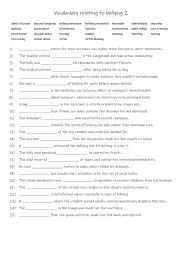
|
B1+-C1 Vocabulary relating to bullying 2
Learning vocabulary related to bullying helps students better understand, identify, and address bullying behaviours, whether in person or online. Terms like cyberbullying, harassment, and abuse of power raise awareness of the different forms bullying can take, while words like empathy and bullying prevention encourage discussions on fostering kindn...
Level: intermediate
Age: 12-100
Type:
Downloads: 111
|

|
B1- B2 Mastering 25 frequency and time-related words
Students read the sentences and complete the gap-fill with a frequency or time related word in bold. Answers on page 2.
Level: intermediate
Age: 9-100
Type:
Downloads: 114
|
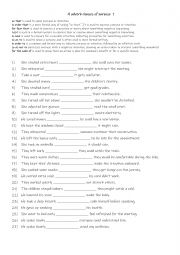
|
B1- B2 9 adverb clauses of purpose 1
First, students need to familiarise themselves with the 9 adverbs and check their meaning. Then they read the sentences to see which one is needed to complete the sentence. Each word is used 3 times! Answers on page 2.
Level: intermediate
Age: 12-100
Type:
Downloads: 108
|
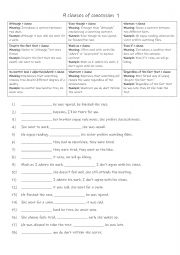
|
B1- B2 9 clauses of concession 1
First, students need to familiarise themselves with the 9 clauses and their meanings. Then they read the sentences to see which one is required to complete the gap-fill. Each clause is used 2 times! Answers on page 2.
Level: intermediate
Age: 10-100
Type:
Downloads: 104
|
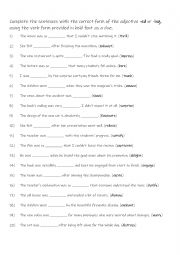
|
B1- B2 Adjective -ed or -ing practise
Students complete the sentences with the correct form of the adjective -ed or -ing, using the verb form provided in bold font as a clue. Answers on page 2.
Level: intermediate
Age: 10-100
Type:
Downloads: 116
|
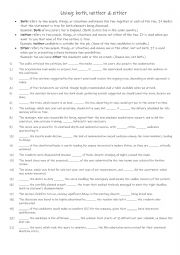
|
B1- B2 Using both, neither or either
Students read the uses for each determiner.Understanding these points helps in constructing sentences correctly and making clear distinctions between the options or choices being discussed. Students then complete the gap-fill with the correct one. Each determiner is used 7 times . Answers on page 2
Level: intermediate
Age: 10-100
Type:
Downloads: 111
|
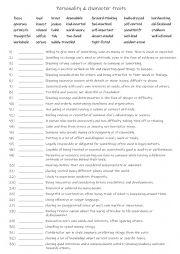
|
B1-B2 33 adjectives to describe personality & character traits
Recognising and understanding traits in others can improve your communication and interactions. It helps you navigate relationships more effectively, whether with family, friends, or colleagues, by fostering empathy and understanding. Students match the adjectives in bold to their written definitions. This worksheet is suitable for pair work or sma...
Level: intermediate
Age: 12-100
Type:
Downloads: 118
|
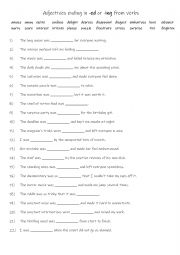
|
B1-B2 22 Adjectives ending in -ed or -ing from verbs practise
Learning these adjectives helps students describe emotions, feelings, and situations more accurately, allowing you to express yourself more vividly. Understanding the difference between -ed and -ing forms prevents common errors. For example, "bored" describes how you feel, while "boring" describes something that causes that feeling. Practicing thes...
Level: intermediate
Age: 10-100
Type:
Downloads: 114
|
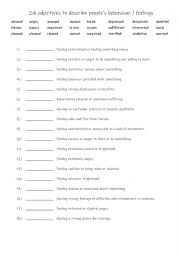
|
B1-B2 24 adjectives to describe people�s behaviour / feelings
Students familiar themselves with the adjectives in bold, which ones are positive or negative. Then they read the definitions and write the according adjective on the line provided. This worksheet could also be used as a speaking reinforcement activity for pairs and small groups, What do you do when you feel ______? What makes you ________? Etc. ...
Level: intermediate
Age: 9-100
Type:
Downloads: 115
|
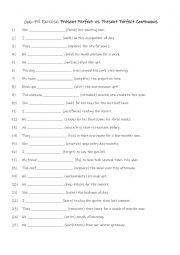
|
B1-B2 Present Perfect vs. Present Perfect Continuous practise
Students complete the gap-fill with the correct tense form using key word in (). Answers on page 2.
Level: intermediate
Age: 11-100
Type:
Downloads: 116
|












